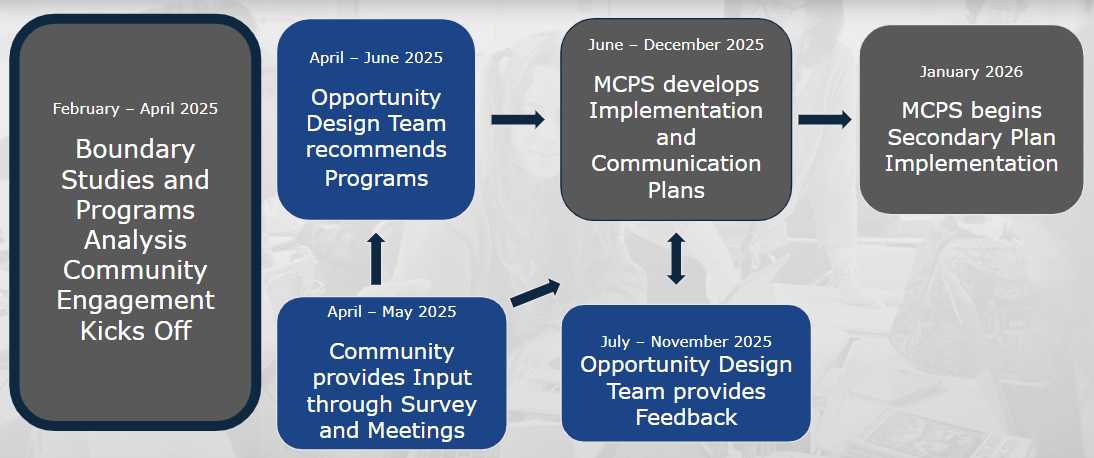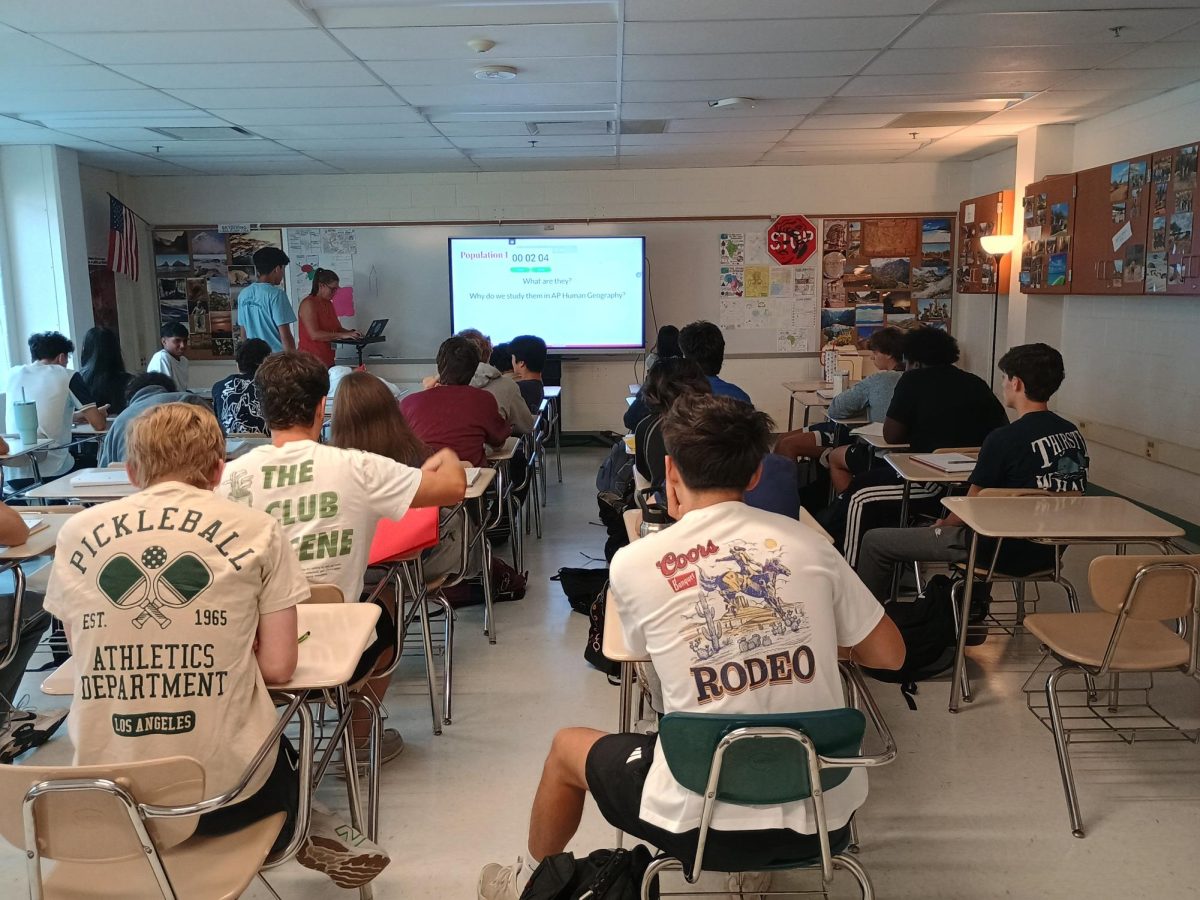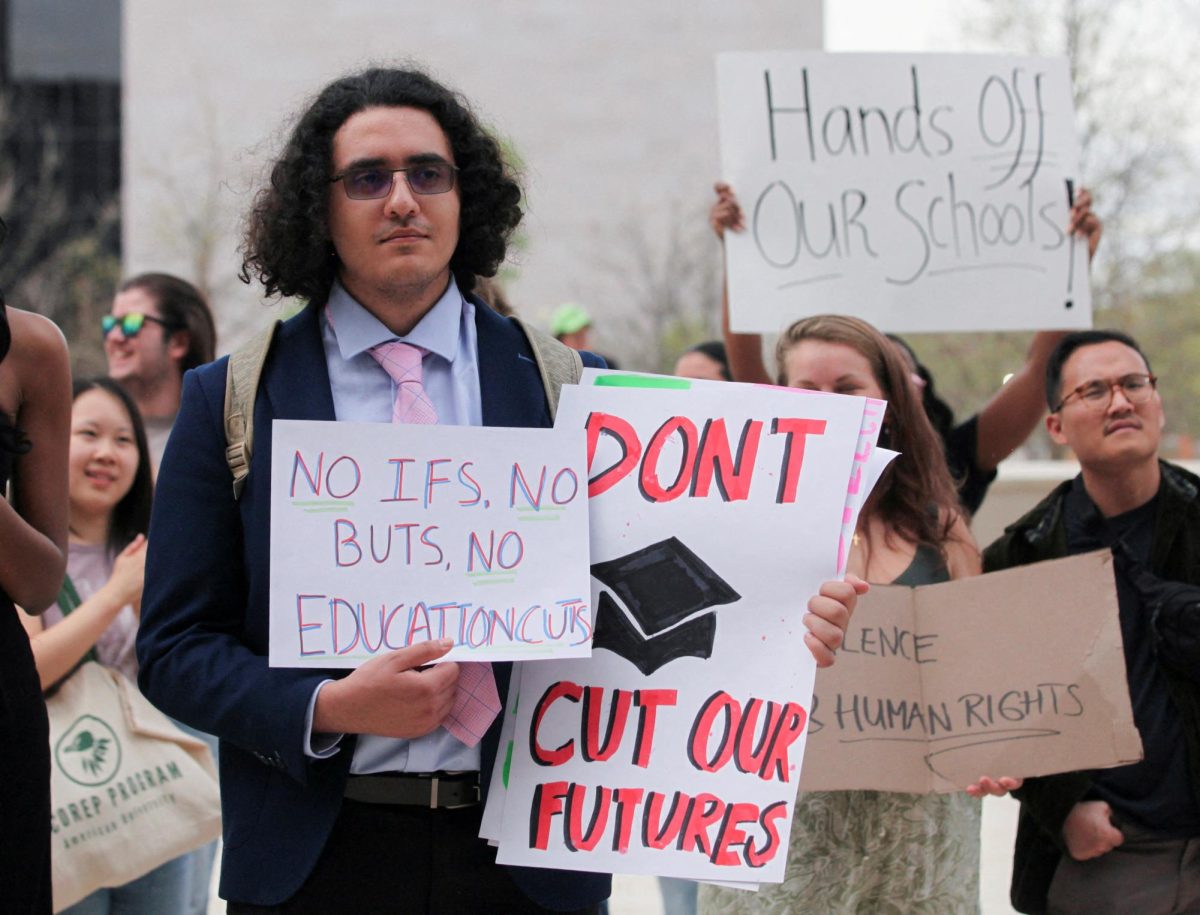Board defers decision on boundary studies to early December


The MCPS Board of Education postponed voting on a contract for two boundary studies at its Facilities and Boundaries Decisions Meeting on Thursday, Nov. 21. The Board elected to come back to the issue at its regular business meeting on Wednesday, Dec. 5.
The two boundary studies are necessary as MCPS prepares for three major capital projects to be completed by August 2027. The first of the two boundary studies will look at the reopening of Woodward High School less than a mile away from WJ, helping alleviate serious overcrowding in multiple downcounty schools. The other study, in response to the expansion of Damascus High School and the newly constructed Crown High School, located in Gaithersburg, will determine boundaries in the upcounty region.
At its Nov. 21 meeting, the Board was presented with the results of MCPS’ request for proposal — an open bid for solicitations from consultants to conduct the study. The bid opened on Sept. 9 and was extended from Oct. 9 to Oct. 22 and later to Oct. 31. Ultimately, only one company, FLO Analytics, bid, and MCPS brought their $1 million contract proposal to the Board for approval.
FLO Analytics is a geographic information systems (GIS) and data analytics consulting company that has worked in Maryland with Harford County Public Schools and with larger districts like the school district of Philadelphia. FLO will also be working with subcontractor Bloom Planning, a Philadelphia-based educational consulting firm, to facilitate the community engagement aspect of the study.
The contract itself is for $605,667 with a $400,000 allowance that can be used for extra unit services such as additional community meetings or other cost overruns. As Superintendent Dr. Thomas Taylor described, the allowance accounts for “game-time decisions” because “we don’t think it’s a good idea to come back to [the Board] and keep asking for more and more money.” In addition to the 19 high schools in the two studies, FLO will also study how MCPS distributes countywide program offerings like magnet and career readiness programs.
At the presentation, Board members expressed concerns over leaving out schools in the east of the county from the studies, the diversity of FLO and Bloom and their respective abilities to conduct meaningful community engagement.
“Before I raise my hand, I need to be assured that this company is going to be able to have the capabilities to do engagement that is going to reach the different communities in our county because every voice in this study really matters,” Board member Grace Rivera-Oven said.
Added Board member Julie Yang: “For me, to look at this contract, I need a bit more clarity on the program analysis, what’s the deliverable.”
Board member Rebecca Smondrowski, a 12-year veteran of the Board, pointed out that in the Board’s previous boundary study in 2019, the consulting firm came in person to the Board table to present its project proposal prior to its approval.
“If they could do something like that, I think it would bring Board members a much bigger sense of comfort and let the community see that we’re not just being like ‘yup, go ahead, do what you want,’” Smondrowski said.
“We’ll certainly ask and make that invitation,” Taylor responded.
The phrase “boundary study” is a charged one in MCPS, given the controversy over the last boundary study it conducted. In January 2019, off a resolution spearheaded by then-Student Member of the Board Ananya Tadikona, MCPS greenlighted a $475,000 contract with WXY Architecture to study its boundaries countywide. The study was not in preparation for any new high schools but more of a general look at county facility usage efficiency, student population diversity and other important factors in determining boundaries.
From the onset, the Board clarified that it would not necessarily take action on any of the study’s findings, and WXY opted not to provide any recommendations at the end of its study. However, this did not free the study from a firestorm of criticism, with heated community meetings and debates over whether the boundary study should be conducted at all and what factors should be prioritized in the study.
In one case, in a community meeting attended by around 450 people at Julius West Middle School, parents and community members started yelling and jeering at each other and at the WXY presenters. Participants in favor of the study and its focus on school diversity were booed when they spoke, and one presenter cried.
Following pandemic-induced delays and with more pressing conversations around virtual school and school reopenings, the study was quietly concluded in May 2021. The final report found that “existing school boundaries may be minimizing distances to school at the expense of other lenses” and that “there exist opportunities to improve distances to school while improving diversity metrics, though at the expense of assignment stability.”
“The last boundary study that we did, as everybody is aware of, was not a happy experience for anyone. I’m hopeful that this will be way less contentious, but it’s important for me that we all learn from our history,” Smondrowski said. Smondrowski emphasized the lessons learned about community engagement from 2019, including hearing from different voices through outreach beyond emails or website postings.
This map includes all of MCPS’ current boundaries at the high school, middle school and elementary school level. One layer also shows what the high school boundaries would look like after the opening of Crown and Woodward High Schools if every cluster boundary was drawn solely based on distance to the school.
Explore these layers by clicking in the top left corner with the sidebar icon.

The legacy of segregation in MCPS, socioeconomic disparities between different schools in the county, demographic makeup of schools and housing prices all played a factor in the community discussion in the 2019 study. While the issue was never two-sided, those who supported the study hoped to see some changes that would bring equity across all MCPS schools with efficient facility usage. Advocates noted the frequency of major capital projects like additions or major renovations in downcounty schools, like the $40 million decade-long modernization of WJ in the 2000s or the $24.5 million 2019 addition to Walt Whitman High School, while upcounty schools remained neglected or underfunded.
On the other hand, many parents were concerned that any possible redistricting could negatively impact their home values — especially those who were redistricted from more prestigious schools into a new high school that was not necessarily as prestigious and, therefore, would not warrant the same real estate values. Others at community meetings expressed worries that students would be bused away from their closest schools in their local communities and sent to schools much farther in order to promote diversity and better facility usage, akin to the MCPS busing program in the desegregation era.
“There’s going to be a lot of voices, and it’s going to be a bit concerning for some folks, and a lot of people make family decisions based on where they think their kids are gonna go to school, and this is disrupting some of that,” Taylor said. “Folks have to be sensitive to, as we right-size the school populations and readjust the boundary zones based on what we foresee in the next decade or so, that we’re being very comprehensive because we need to be very comprehensive.”
According to data from MocoRealEstate, the five clusters with the lowest median home price are, on average, 9.34% white in student population. On the other hand, the five clusters with the highest median home prices are much less diverse with, on average, a 47.88% white student population, according to data from the 2022-2023 Schools at a Glance Reports produced by MCPS.
Schools with higher real estate prices also tend to test better — in 2023, the average SAT score at Whitman High School, the cluster with the highest median home prices, was 1312, while it sat at 983 at Watkins Mill High School, the cluster with the lowest median home prices.
Factors like test scores play into the perennial school rankings produced by organizations like US News World & Report, which drive the perceived reputation and prestige of schools across the county. In this year’s US News rankings, Whitman was ranked the 2nd best school in the state, while Watkins Mill lagged behind at 146th out of the 255 high schools in Maryland.
Therefore, parents who pay a premium through home prices to live in clusters with more prestigious schools worried that their children could be redistricted into farther, faltering schools, away from their local and well-established community. On the other hand, others feared children in the “lesser” schools were being abandoned and left behind.

The data points to one of the larger issues facing MCPS today, with inequities persisting across individual clusters and schools. And while the correlations between race, home prices and perceived prestige are visible through the data, the solutions are less so. Although a boundary study will not solve all of MCPS’ equity woes, MCPS leaders view it as a chance to start the work on equitable schools.
“With every boundary study, it’s emotional. And I have yet to see a boundary study, in the last 25 years of doing this, that everybody has been like, ‘ugh, these maps are amazing,” Taylor said. “[But,] I actually think this is a tremendous opportunity. It’s almost like you’ve got a reset timeline between now and the fall of 2027, in which we could really reimagine what program offerings look like. This really is a chance for us to do something very comprehensive and with a pretty clear deadline.”
Taylor clarified at the Board table that the two-week delay would not greatly affect the timeline of the project, although the final deadline for the study is immovable due to the need for boundaries to be ready before the schools open.
At a public hearing in November, WJ cluster representative for the Montgomery County PTA Dorigen Hoffman emphasized the importance of timeline staying on track, asking the Board to “stay on track with a boundary study timeline that does not delay the project further, allows for comprehensive community input, and allows for families in the DCC to know their full options well ahead of choice deadlines.”
Your donation will support the student journalists of Walter Johnson High School. Your contribution will allow us to purchase equipment and cover our annual website hosting costs.








